One sunny afternoon at the kennel, I met Max, a majestic Shepnees with a coat as white as snow and eyes filled with intelligence. As I watched him effortlessly navigate through obstacles and warmly interact with both humans and fellow canines, I was struck by the remarkable blend of traits from his parent breeds— the noble Great Pyrenees and the astute German Shepherd.
Known also as Germanees or Shep Py, these dogs are a testament to the wonders of crossbreeding. Their intelligence is palpable, matched only by their gentle, loyal disposition. They fit seamlessly into family life, showing a special fondness for children and an amiable tolerance for other pets.
Yet, life with a Shepnees is a commitment to activity. These dogs are bundles of energy, needing ample space and mental challenges every day to stay content and healthy.
In this article, we will explore the fascinating world of the Great Pyrenees German Shepherd Mix: breed origin, unique traits, health considerations, and dietary needs, among other topics, to fully appreciate what makes this crossbreed so special.
TABLE OF CONTENTS
- Great Pyrenees German Shepherd Mix Quick Breed Summary
- History and Origin of the Great Pyrenees German Shepherd Mix
- Physical Characteristics of the Shepnees
- Shepnees Personality and Temperament
- Common Health Concerns for Shepnees Dogs
- Caring for a German Shepherd Great Pyrenees Mix
- FAQs on the Great Pyrenees German Shepherd Mix
- Bring an Intelligent, Loyal Pet to Your Home
- More Great Pyrenees and German Shepherd Mixes
Great Pyrenees German Shepherd Mix Quick Breed Summary
| Breed Mix Name: | Great Pyrenees German Shepherd Mix, Shepnees, Shep Py, Germanees |
| Size: | 22-32 inches |
| Weight: | 75-120lb |
| Lifespan: | 10-12 years |
| Coat: | Thick medium length with a mane of wavy hair at the front |
| Color: | White, black or tan |
| Do They Shed: | Yes, lots! |
| Temperament: | Loyal, sweet, protective and energetic |
| Intelligence: | Intelligent and easy to train |
| Socialization: | Gets along very well with other people and pets |
| Destructive Behavior: | May dig or chew if they get bored |
| People Skills: | Good with people of all ages |
| Good with Children: | Great |
| Activity Levels: | High energy and require lots of exercise |
History and Origin of the Great Pyrenees German Shepherd Mix
The Great Pyrenees German Shepherd Mix, commonly referred to as Shepnees, Germanees, and Shep Py, is a crossbreed dog mix between a Great Pyrenees and a German Shepherd.
Both parent breeds are known for their working drive, so naturally, the Great Pyrenees German Shepherd Mix is an extremely hard-working breed that is ready to be challenged (both mentally and physically).
Before we discuss the characteristics of this mix, let us look at the parent breeds.
Great Pyrenees
The Great Pyrenees, also known as the Pyrenean Mountain Dog, is a breed that has always fascinated me with its majestic presence and serene temperament. This breed has a storied past, rooted in the Pyrenees Mountains which form a natural border between France and Spain. Historically, they were revered as guardians, protecting sheep from predators like wolves and bears. Their lineage is ancient, possibly dating as far back as 3000 B.C. The shepherds of the Pyrenees Mountains valued these dogs for their protective nature, and their ability to withstand the harsh mountainous climate.
Physically, the Great Pyrenees is nothing short of impressive. These dogs are large and powerful, yet they carry themselves with an elegance that belies their size. They typically sport a thick, weather-resistant white coat, which may include shades of gray, tan, or reddish-brown. This double coat is essential, offering insulation against both the cold of the mountains and the heat. They have a sturdy, muscular build, with males standing around 27 to 32 inches at the shoulder and females being slightly smaller.
But it’s their temperament that truly captures one’s heart. In my experience, the Great Pyrenees exude a sense of gentle strength and quiet confidence. They are known for their calm and patient nature, traits that make them wonderful family companions, particularly in homes with children.
German Shepherd
The German Shepherd is a breed I hold in high esteem for its intelligence, versatility, and loyalty. Originating in Germany in the late 19th century, this breed was initially developed for herding and guarding sheep. Max von Stephanitz, credited as the father of the German Shepherd breed, aimed to create a dog that excelled in both intelligence and working ability. The breed quickly gained recognition for its versatility, being used in various roles such as police work, guarding, search and rescue, and later, as a beloved family pet.
German Shepherds are characterized by their strong, athletic build. They typically stand between 22 to 26 inches at the shoulder and are known for their distinctive tan-and-black or red-and-black coat. They have a double coat, with a dense outer coat and a softer undercoat, which provides them protection in various climates.
But it’s their temperament and intelligence that truly set them apart. German Shepherds are renowned for their keen intellect, making them one of the easiest breeds to train. This intelligence, coupled with their natural loyalty and protective instincts, makes them excellent working dogs in various fields. They are also known for their high energy levels and need for regular exercise and mental stimulation.
In terms of family life, German Shepherds can be wonderful companions. They are typically very loyal and protective of their family, often forming a strong bond with one particular family member. However, they can be wary of strangers and may require proper socialization from a young age to ensure they are well-adjusted.
Physical Characteristics of the Shepnees
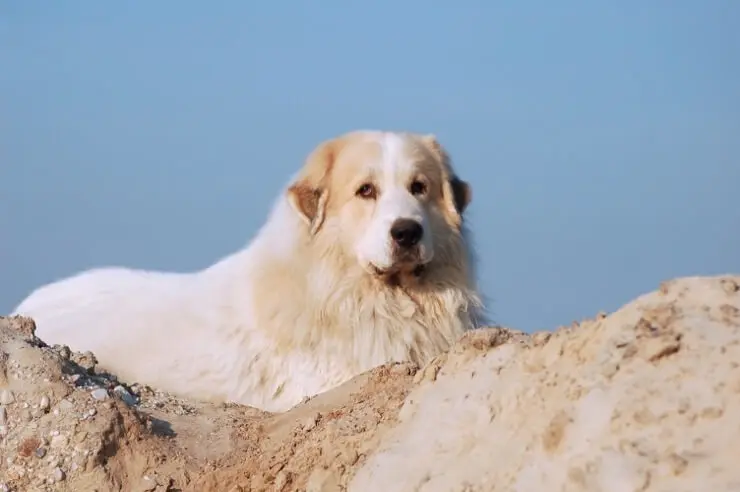
From Adobe Stock
Great Pyrenees German Shepherd mixes inherit their majestic appearance from their Great Pyrenees ancestors. These pooches have luscious coats that often make them appear more like a lion than a dog.
Combining this gorgeous breed with the sleek, strong German Shepherd produces a breed that is absolutely breathtaking. Some mixes retain the perky ears of a German Shepherd, while others inherit the floppy ears of a Great Pyrenees. With their long flowing hair and enormous body, these hybrids are sure to leave everyone they meet awestruck.
Coat and Colors
These dogs are most known for their luscious fur.
Their beautiful locks are typically medium-length and straight. Although the hair on the majority of their body is straight, they tend to have excess fur around their neck (similar to a lion’s mane) that has a wavy or curly texture to it.
As for color, they typically inherit their coat color from their Great Pyrenees parent – white, black, and tan. They usually have solid colored coats but sometimes their coats may contain multiple colors like their German Shepherd ancestors.
Because they have such dense coats, Great Pyrenees German Shepherd mixes shed heavily.
Height and Weight
You can expect this dog to stand between 22-32 inches tall.
As for weight, they are typically 75-120lb. These mixes can be quite muscular and appear very strong – their huge size is sometimes intimidating, yet these hybrids are gentle giants.
Shepnees Personality and Temperament
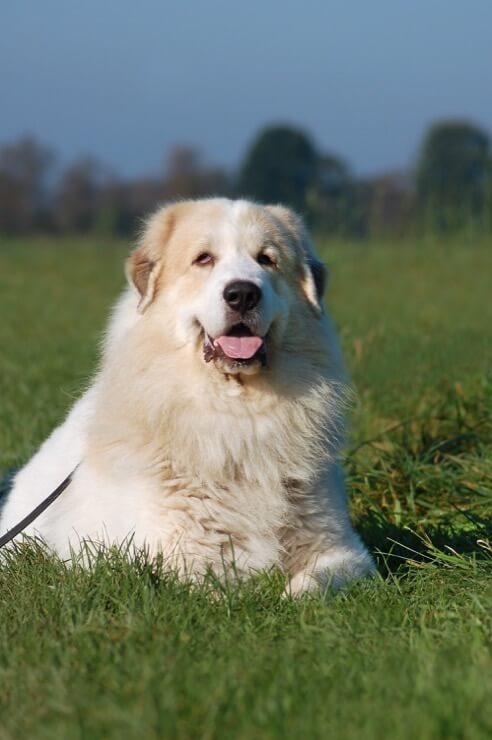
From Adobe Stock
I’ve found that they encapsulate the best traits of both their parent breeds, creating a truly exceptional companion. This mix inherits the gentle, compassionate nature of the Great Pyrenees and the steadfast loyalty of the German Shepherd, a combination that has always impressed me.
Their intelligence is something I’ve observed firsthand. These dogs are not just smart; they have a quickness of mind and a keenness to learn that makes training both a joy and a journey of discovery.
On top of that, they approach tasks with a seriousness and determination that reflects their heritage. However, it’s their dignified confidence that always catches my eye. These dogs carry themselves with an assuredness that is rarely seen, never appearing timid and always exuding a natural poise.
Yet, behind this serious exterior lies a playful heart. I recall one Pyrenees Shepherd mix, Leo, whose love for play was boundless. They possess an adventurous spirit, thriving on exploration and activity. Regular play and mental stimulation are key to keeping them happy and well-behaved.
Their energy levels are something to behold. These large dogs are brimming with vitality, and I’ve learned that regular exercise is crucial to channel their energy positively. Without it, they can become restless and unmanageable.
Another aspect I emphasize in their upbringing is socialization. When introduced to various people and situations from a young age, they grow into affectionate and sociable adults. This early exposure shapes them into well-rounded dogs, comfortable and loving with both humans and other animals.
Common Health Concerns for Shepnees Dogs
You’re better placed to offer proactive care and prevention when aware of the health concerns that can affect this breed. Therefore, the following section explores some of the common health issues that this mix may face, based on their genetic heritage.
Hip and Elbow Dysplasia
This genetic condition, where the hip or elbow joint doesn’t fit together perfectly, can lead to arthritis or lameness. It’s a common concern in both Great Pyrenees and German Shepherds. Maintaining a healthy weight is crucial for these dogs to mitigate the risk of hip and elbow dysplasia, something I always monitor in larger breeds.
Von Willebrand’s Disease (vWD)
This blood clotting disorder affects many dog breeds, but it is more commonly associated with certain breeds than others. In the case of the Great Pyrenees German Shepherd Mix, the risk of inheriting vWD depends largely on the genetic background of the parent breeds.
The German Shepherd breed can be prone to vWD, though it’s not one of the most commonly affected breeds. The Great Pyrenees, on the other hand, is not typically known for a high incidence of this disease. However, since vWD can be present in German Shepherds, there is a possibility, albeit potentially lower, that a Great Pyrenees German Shepherd mix could inherit this condition.
Bloat or Gastric Torsion
Bloat is a life-threatening situation where the stomach fills with gas and can sometimes twist. Owners of large, deep-chested dogs like this mix must be aware of the signs. Preventive measures include feeding smaller, more frequent meals and avoiding vigorous exercise around feeding times.
Allergies and Skin Issues
German Shepherds often have sensitivities that can lead to skin issues, and I’ve observed this trait in their mixed offspring as well. Managing these conditions involves regular grooming and attention to diet.
Eye Problems
Both parent breeds can suffer from various eye issues, such as cataracts or progressive retinal atrophy. Regular veterinary check-ups are important for early detection and treatment of these conditions.
Heart Issues
The Great Pyrenees can be prone to certain cardiac conditions, which might be inherited by their mixed-breed offspring. Regular veterinary check-ups are essential for monitoring and managing heart health.
Caring for a German Shepherd Great Pyrenees Mix
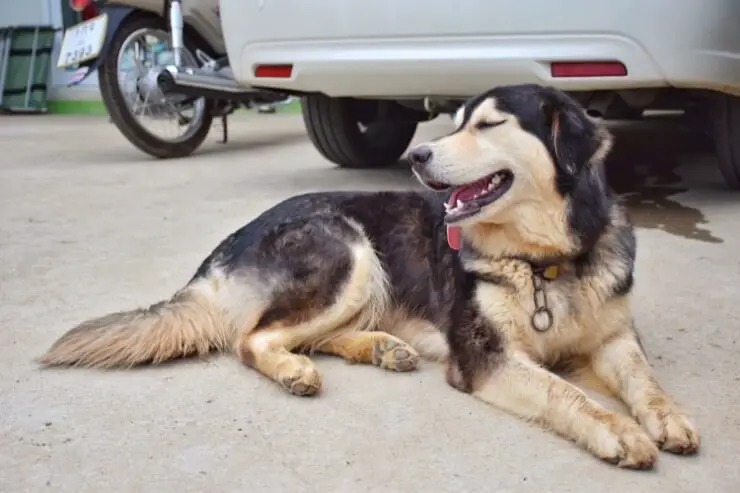
From Adobe Stock
Great Pyrenees German Shepherd mixes have an excellent, sweet temperament that is perfect for first-time owners.
They are easy to train because of their high intelligence and they are typically very well-behaved.
These majestic dogs require some moderate grooming and also need a significant amount of exercise each day, so make sure you have the money and time to invest in these beautiful hybrids before adopting one.
Exercise
The Great Pyrenees German Shepherd mix is a highly active dog that thrives on regular, vigorous exercise. Given their heritage, these dogs are happiest when they have ample space to run and explore. Large yards and open areas align perfectly with their need for freedom and movement. Daily walks are non-negotiable for this breed; I usually recommend at least two lengthy walks per day to meet their exercise requirements.
Such physical activity not only keeps them fit but also allows them to channel their energy positively. If a person isn’t able to commit to this level of physical activity, this might not be the right breed for them. Consistent exercise is crucial to prevent boredom and the development of destructive behaviors like digging and chewing.
Training a Great Pyrenees German Shepherd Mix
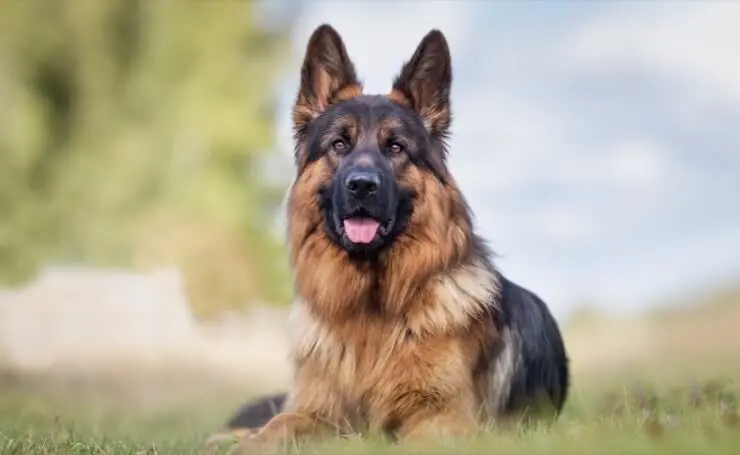
From Adobe Stock
Because these crosses are extremely intelligent, I find that training one is not that difficult.
These dogs are excited to learn new tricks and are eager to please their owners. As with all dog breeds, you should plan to train this pooch from an early age, so they do not become too stubborn.
I recommend positive reinforcement in dog training. As such, reward good behaviors with lots of treats and praise. This technique is especially important when you are training your Great Pyrenees German Shepherd to not bark so frequently.
Consistently reward them for quiet and calm behavior, rather than punish them for barking.
Because this breed is highly intelligent it is a great idea to consider doing agility training with your Great Pyrenees mix if you have the time. Running between obstacles and jumping hurdles is very mentally and physically stimulating and this working breed loves the chance to complete tasks.
Mental Stimulation
Although not everyone has access to a herd for them to practice their natural herding instincts, there are plenty of other ways to keep them mentally stimulated. Agility training is an excellent option, allowing them to utilize their problem-solving skills and natural agility. It’s always rewarding to see them navigate through obstacle courses, showcasing their intelligence and physical prowess.
Interactive play, like fetch or hide-and-seek with toys, also provides valuable mental exercise. These activities encourage them to think and react, keeping their minds active and engaged. Regular mental stimulation is key to maintaining their mental well-being, ensuring they are as mentally fit as they are physically.
Grooming
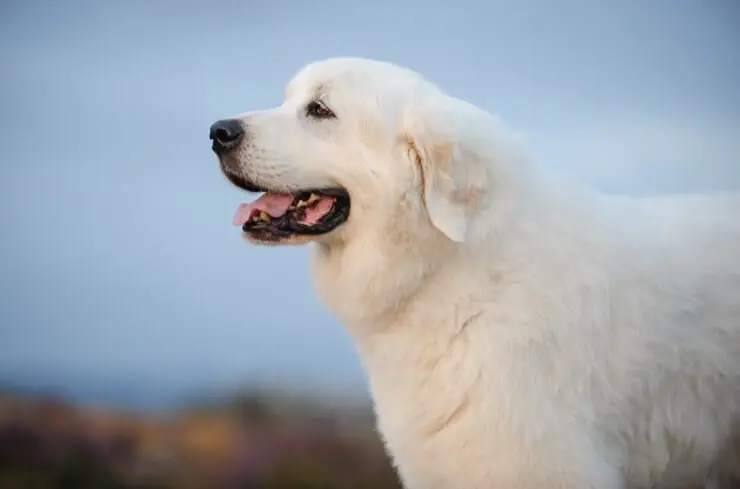
From Adobe Stock
Great Pyrenees German Shepherd mixes have gorgeous fur, but they do not just magically have silky locks. They need regular grooming.
Brushing
Daily brushing is essential for the Great Pyrenees German Shepherd mix, given their thick, double coat. Investing in a good de-shedding tool can make a significant difference, helping to manage the loose hair that these dogs shed, especially during seasonal changes. Regular brushing not only keeps their coat in good condition but also helps to distribute natural skin oils, which are vital for a healthy coat. For this mix, a routine brushing schedule is key to preventing matting and tangles, which can be uncomfortable for the dog.
Grooming Visits
Regular visits to a professional groomer can be beneficial, especially for maintaining the health and appearance of their coat. Depending on the dog’s coat growth and condition, a grooming session once a month can be ideal. These sessions often include a thorough brush-out, ear cleaning, nail trimming, and sometimes a bath, which can be a comprehensive way to manage their grooming needs.
Bathing
When it comes to bathing, less is often more for the Great Pyrenees German Shepherd mix. Due to the potential sensitivity of their skin, I recommend you bathe them only when necessary, ideally not more than once a month. Over-bathing can strip their coat of natural oils, leading to dry skin and irritation. Using a mild, dog-specific shampoo can help maintain the health of their skin and coat. It’s also important to observe their skin for any signs of dryness or irritation, which can be an indicator of over-bathing.
Ear Care
Ear care is crucial, particularly given the long hair around their ears that can trap dirt and debris, potentially leading to infections. Regular checking and cleaning of the ears should be part of their grooming routine. This involves gently wiping the outer ear with a suitable canine ear cleaner and a soft cloth or cotton ball. It’s important to never insert anything into the ear canal; instead, focus on cleaning the outer ear area to prevent any buildup of wax or debris.
Dental Care
Regular brushing of their teeth with dog-specific toothpaste can help prevent tartar build-up and gum disease. It’s a good idea to introduce dental care routines early on, so they become accustomed to the process. I find that dental chews and toys are also beneficial in maintaining good oral health.
Nail Trimming
Keeping their nails trimmed is also important for their overall comfort and health. Long nails can cause discomfort and may lead to problems with walking or running. If you can hear their nails clicking on the floor, it’s a sign that a trim is needed.
Feeding a Shepnees
- Calories Per Day: 1500-1700
- Cups of Kibble Per Day: ~3
Because of their large size, Great Pyrenees German Shepherd mixes need a lot of food.
Portion Control and Frequency
Managing portion control is crucial for this mix, as they are prone to obesity. Based on my experience with similar breeds, it’s advisable to divide Great Pyrenees German Shepherd mix daily food intake into 2-3 meals. This not only helps in controlling their weight but also reduces the risk of bloat, a serious health concern we mentioned earlier. I’ve found that a structured feeding schedule helps maintain their digestive health and keeps their metabolism steady.
Nutritional Content
When selecting food, I always emphasize the importance of quality ingredients. Foods rich in fish oil, glucosamine, and chondroitin are excellent for supporting healthy bone and joint development, which is particularly important for preventing conditions like hip and elbow dysplasia. The right balance of proteins, fats, and carbohydrates, along with essential vitamins and minerals, is key to their overall health.
Sensitive Stomachs
Considering the German Shepherd’s tendency towards sensitive stomachs, this mix may also inherit this trait. I’ve often advised owners to consult with their veterinarian to find the most suitable diet, especially if their dog shows signs of digestive discomfort. A diet formulated for sensitive stomachs, possibly including easy-to-digest ingredients like rice and lamb, can be beneficial.
Treats and Extras
Treats are a great tool for training and bonding, but I always remind owners to use them judiciously. Treats should be factored into the dog’s daily calorie intake to avoid overfeeding. Healthy options like small pieces of cooked vegetables or lean meats can be good alternatives to store-bought treats. Also, ensuring access to fresh water at all times is essential for their hydration and overall health.
Dietary Changes
Any changes to their diet should be done gradually. A sudden switch in food can cause digestive upsets. Introducing new food slowly, by mixing it with the current food and gradually increasing the proportion over a week or two, helps in a smooth transition.
FAQs on the Great Pyrenees German Shepherd Mix
How long does a Great Pyrenees German Shepherd Mix live?
These dogs typically have a lifespan of 10-12 years.
How much does a Great Pyrenees German Shepherd Mix cost?
These beautiful pups can cost around $400-$500 from a breeder. If you are lucky enough to find one in a shelter they will be cheaper.
What is the ideal environment for a Great Pyrenees German Shepherd Mix?
This mix thrives in an environment where they have ample space to roam and exercise. They are well-suited to homes with large yards or access to open spaces. Due to their size and energy levels, they may not be ideal for apartment living unless they are provided with sufficient daily exercise.
Is a Great Pyrenees German Shepherd Mix a good family dog?
As long as they are socialized from a puppy, the German Shepherd Great Pyrenees mix makes an incredible family dog. These pooches are very loving and sweet and get along easily with children and other pets.
Despite their large appearance, these dogs are very gentle and patient so they will get along even with young children.
Can the Great Pyrenees German Shepherd Mix adapt to hot climates?
While they can adapt to various climates, their thick coats make them more suited to cooler temperatures. In hotter climates, it’s important to provide them with a cool, shaded area and plenty of water. Extra care should be taken during hot weather to prevent overheating, including avoiding strenuous exercise during the hottest parts of the day.
Are Great Pyrenees German Shepherd mixes good with children?
Yes, they are generally good with children, especially when socialized from a young age. Their gentle nature from the Great Pyrenees’ side and the protective instincts from the German Shepherd’s side make them wonderful family pets. However, as with any large dog, interactions with small children should be supervised.
How much grooming does this mix require?
Due to their thick double coats, they require regular grooming. This includes daily brushing to prevent matting and tangling, and occasional baths. They may also require more frequent grooming during shedding seasons to manage the increased shedding.
What kind of training does a Great Pyrenees German Shepherd Mix need?
Consistent and positive training methods work best with this mix. They respond well to reward-based training techniques. Due to their intelligence and independent nature, they benefit from early socialization and obedience training to ensure they grow into well-mannered adults.
Bring an Intelligent, Loyal Pet to Your Home
Great Pyrenees German Shepherd mixes are a remarkable blend of loyalty, intelligence, and affection, making them wonderful family companions. In my experience, their eagerness to please and hardworking nature are unmatched, thriving best when given tasks or engaging in stimulating activities. They inherit the gentle, protective instincts of the Great Pyrenees and the loyalty and versatility of the German Shepherd, creating a well-rounded and adaptable breed.
These dogs require regular, substantial exercise, enjoying long walks and ample space to explore. It’s important to monitor them in warmer climates due to their thick coats, ensuring they stay cool and comfortable. This mix is particularly well-suited for active individuals or families who enjoy an outdoorsy lifestyle. They might not be the ideal choice for those who prefer a more sedentary lifestyle, given their high energy levels and need for regular activity.
More Great Pyrenees and German Shepherd Mixes
Want a Great Pyrenees mix or a German Shepherd mix but aren’t keen on the Great Pyrenees German Shepherd Mix? Check out these other hybrid dog breeds:
German Shepherd Mixes
- German Shepherd Husky Mix
- Australian Shepherd German Shepherd Mix
- German Shepherd Poodle Mix
- German Shepherd Wolf Mix
- German Shepherd Rottweiler Mix
- Border Collie German Shepherd Mix
- German Shepherd Boxer Mix
- German Shepherd Beagle Mix
- German Shepherd Golden Retriever Mix
- German Shepherd Pitbull Mix
- Corgi German Shepherd Mix
- German Shepherd Lab Mix
- Golden Shepherd



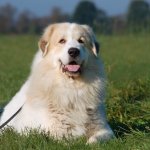
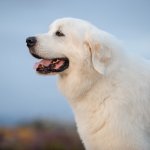




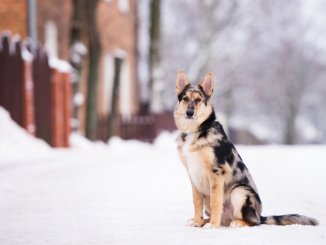
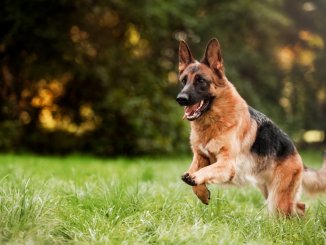
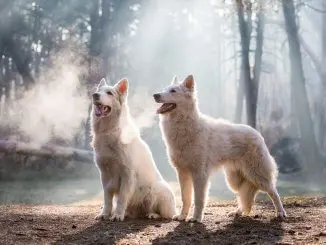
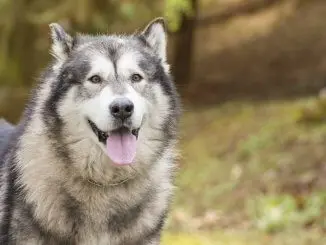
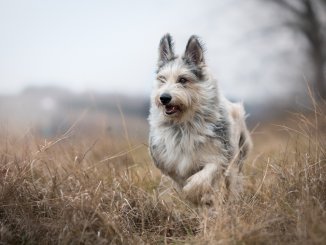
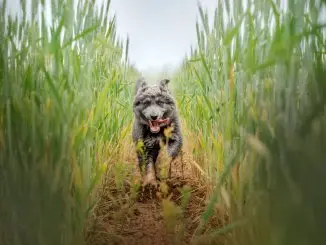
We have a golden retriever/great Pyrenees. Everything you have written about them applies to our dog. They may make beautiful pets. I enjoyed your article very much.
I my German Shepherd/Great Pyrenees is such a pup with so much love for people and such a sweet nature. She has a German face but the rest of her body is pure Pyrenees. She is 80 lbs and looks like big dumb blonde German but she’s so smart like a Pyrenees. She is so good and her social skills makes her the perfect therapy dog for young kids and she is also been trained as my hearing pup.
All so true, our Baylee she’s a German Shepherd/pyrenees Mix. And let me tell you she is by far the best dog ever and has been since we got her at only 5 weeks old. We wouldn’t trade her for the world! Definitely a blessing to our family!
I recently lost my Great Pyreness/Shepherd mix. Lola was the perfect dog (other than shedding). She looked like a miniature pony, at 23 inches and 130 pounds. Wish I could find another.
Hi there don’t know if you have found a new puppy but my German shepherd and great pyrenees dogs just had a litter and I’ll be rehoming them when they are old enough my phone number is 641-208-7799
Agility service training in Pennsylvania, Transylvania, reach me at 205/800+8090 germanese hybrid great protection and guard dog
I have a pyrenees shepherd cross and everything people say is true…he’s 10 years old and very protective and well trained. I trained him to be put on people and even though he sometimes doesn’t want to he’ll go and escort them and keep them safe. He’s about 130 and to keep him in shape i have 3 other dogs to play with. You can’t go wrong with this breed